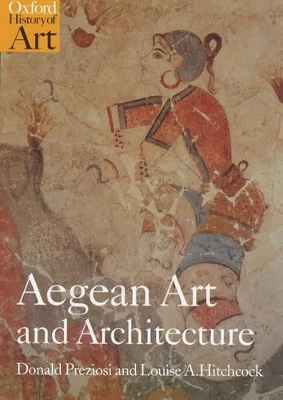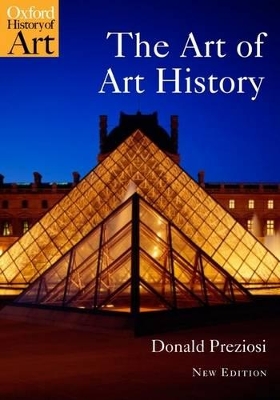Oxford History of Art
2 total works
The amazing discovery of the 'first European civilization' in Crete, Greece and the Aegean islands during the late nineteenth and early twentieth centuries was beyond what anyone had imagined. Beginning with the Neolithic period, before 3000 BCE, and ending at the close of the Bronze Age and the transition to the Iron Age of Hellenic Greece (c.1000 BCE), this is the first comprehensive introduction to the visual arts and architecture of this extraordinary
era.
This book introduces the reader to the historical and social contexts within which the arts - pottery, gold, silver, and ivory objects, gravestone reliefs, frescoes, and architecture - of the Aegean area developed. It examines the functions they served, and the ways in which they can be read as evidence for the interactions of many different peoples and societies in the eastern Mediterranean. It also provides an up-to-date critical historiography of the field in its relationship to the growth
of ancient art history, archaeology, and museology in the nineteenth and twentieth centuries, giving a contemporary audience a clear appreciation of what has been at stake in the uncovering and reconstruction of this ancient society.
era.
This book introduces the reader to the historical and social contexts within which the arts - pottery, gold, silver, and ivory objects, gravestone reliefs, frescoes, and architecture - of the Aegean area developed. It examines the functions they served, and the ways in which they can be read as evidence for the interactions of many different peoples and societies in the eastern Mediterranean. It also provides an up-to-date critical historiography of the field in its relationship to the growth
of ancient art history, archaeology, and museology in the nineteenth and twentieth centuries, giving a contemporary audience a clear appreciation of what has been at stake in the uncovering and reconstruction of this ancient society.
What is art history? Why, how, and where did it originate, and how have its methods changed over time? The history of art has been written and rewritten since classical antiquity. Since the foundation of the modern discipline of art history in Germany in the late eighteenth century, debates about art and its histories have intensified. Historians, philosophers, psychologists, and anthropologists among others have changed our notions of what art history has been, is, and might be.
This anthology is a guide to understanding art history through critical reading of the field's most innovative and influential texts, focusing on the past two centuries.
Each section focuses on a key issue: art as history; aesthetics; form, content, and style; anthropology; meaning and interpretation; authorship and identity; and the phenomenon of globalization. More than thirty readings from writers as diverse as Winckelmann, Kant, Mary Kelly, and Michel Foucault are brought together, with editorial introductions to each topic providing background information, bibliographies, and critical elucidations of the issues at stake.
This updated and expanded edition contains sixteen newly included extracts from key thinkers in the history of art, from Giorgio Vasari to Walter Benjamin and Satya Mohanty; a new section on globalization; and also a new concluding essay from Donald Preziosi on the tasks of the art historian today.
This anthology is a guide to understanding art history through critical reading of the field's most innovative and influential texts, focusing on the past two centuries.
Each section focuses on a key issue: art as history; aesthetics; form, content, and style; anthropology; meaning and interpretation; authorship and identity; and the phenomenon of globalization. More than thirty readings from writers as diverse as Winckelmann, Kant, Mary Kelly, and Michel Foucault are brought together, with editorial introductions to each topic providing background information, bibliographies, and critical elucidations of the issues at stake.
This updated and expanded edition contains sixteen newly included extracts from key thinkers in the history of art, from Giorgio Vasari to Walter Benjamin and Satya Mohanty; a new section on globalization; and also a new concluding essay from Donald Preziosi on the tasks of the art historian today.

